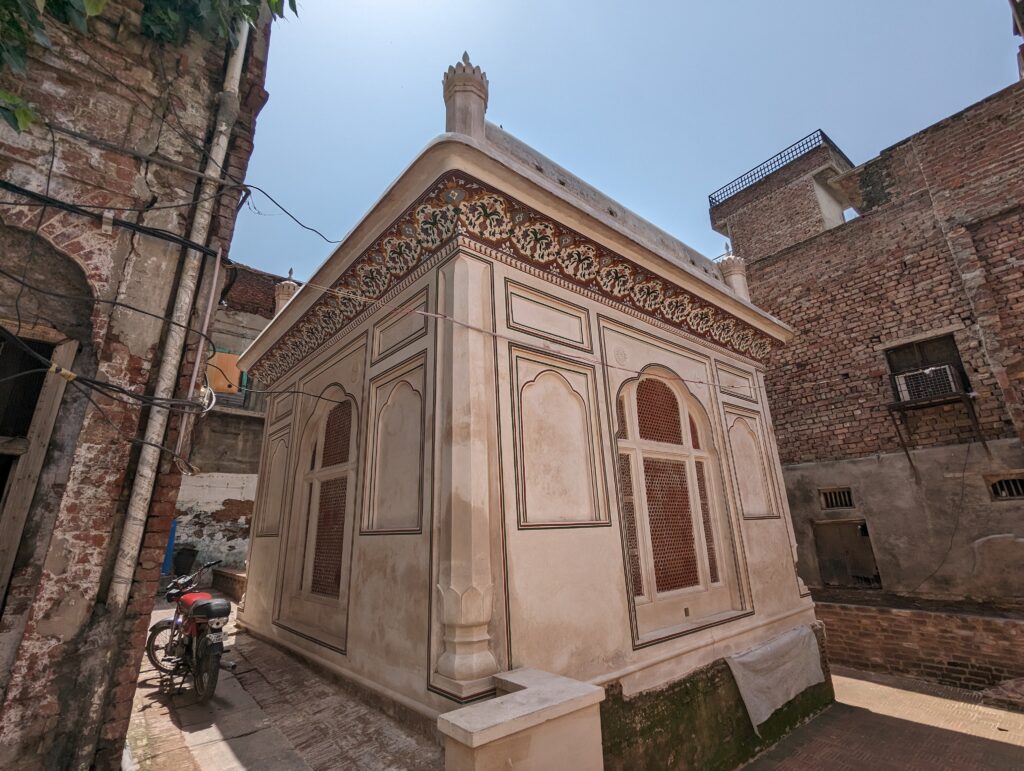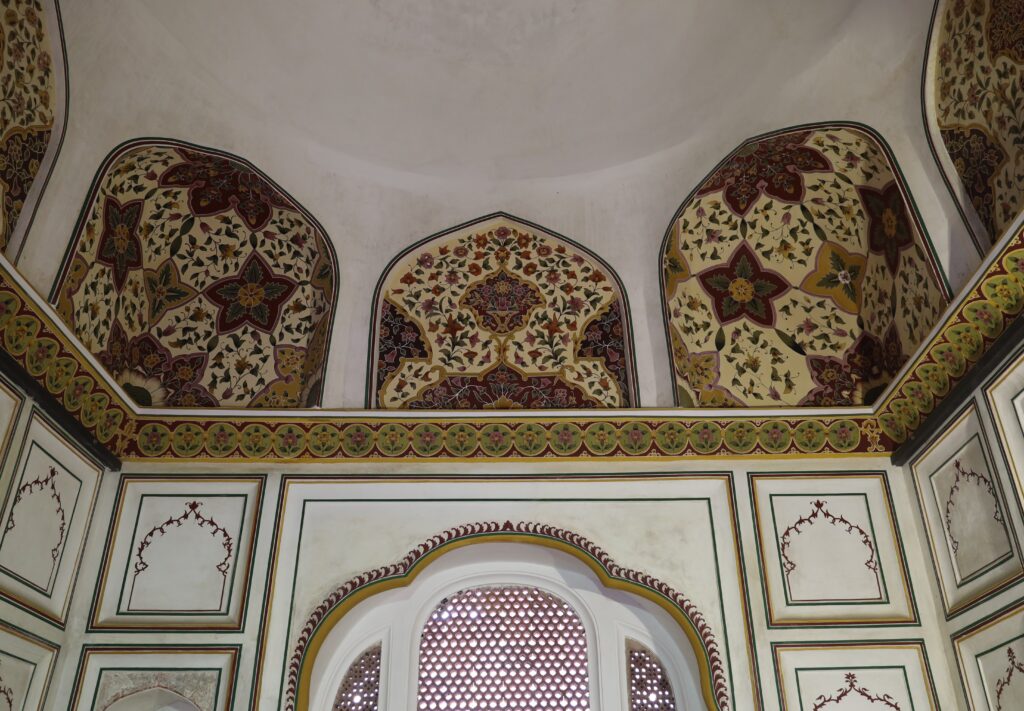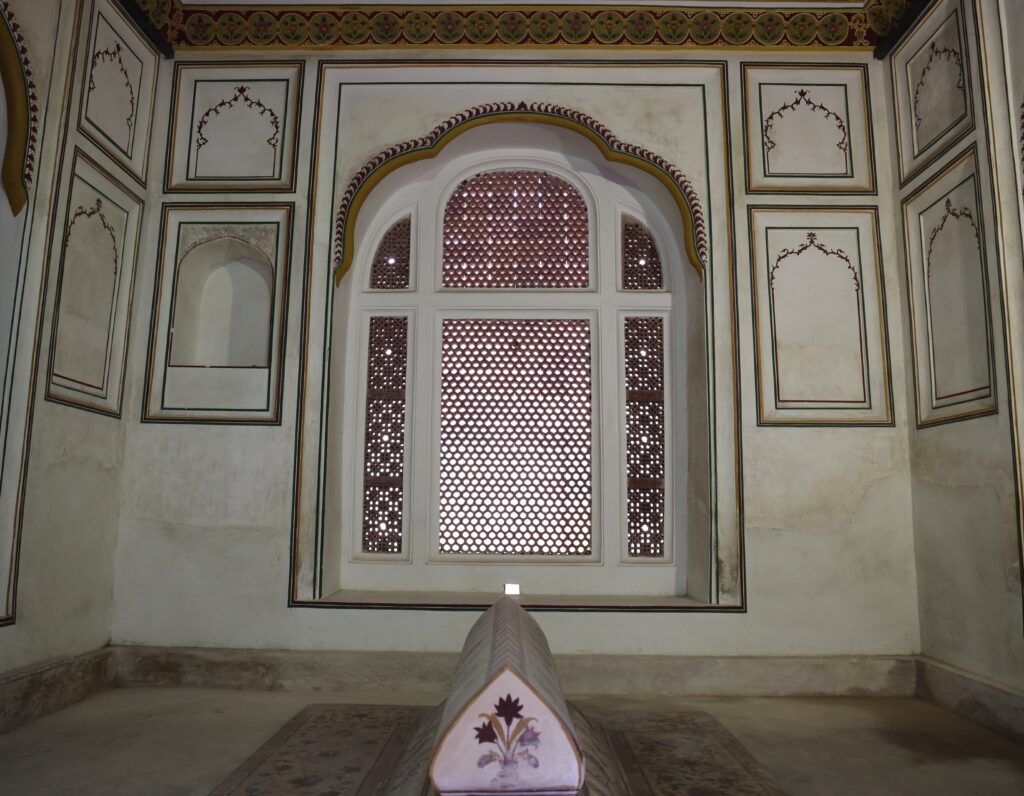Tucked away behind the vibrant walls of the Wazir Khan Mosque lies a hidden gem that has recently been brought back to life: the Tomb of Imam Gammo. This ancient site, once forgotten and neglected, has been given a new lease on life through a meticulous restoration that celebrates its deep historical and cultural significance. The revival of Imam Gammo’s tomb is more than just a restoration; it is a rediscovery of a piece of Lahore’s rich heritage, connecting us to stories of the past that continue to shape the present.

Let me tell you a little about the old Lahore and the historic Masjid Wazir Khan. The Walled City of Lahore is a treasure trove of history, where every corner and crevice whispers tales of bygone eras. With its narrow lanes, bustling bazaars, and architectural wonders, it encapsulates the essence of Lahore’s cultural and historical identity. Among its many jewels, the Wazir Khan Mosque stands as a beacon of Mughal splendor, renowned for its exquisite tile work and intricate frescoes. The mosque, built in the 17th century, is a testament to the city’s rich artistic heritage and its enduring spirit. The nearby Tomb of Imam Gammo is a lesser-known but equally significant part of this tapestry, offering a glimpse into a chapter of Lahore’s history that deserves to be remembered.
Now, coming back to Imam Gammo, let me narrate a little of his story. Imam Gammo was not just a religious leader but a figure of immense wisdom, compassion, and influence. Appointed as the Imam of Wazir Khan Mosque in 1779, he was revered for his knowledge of the Quran and his expertise in the sciences and arts of his time. His reputation for piety and dedication to his community earned him respect from all quarters, including the Sikh ruler Maharaja Ranjit Singh. It was Imam Gammo’s influence that preserved the Wazir Khan Mosque as a place of worship during a time when many mosques were repurposed under Sikh rule. His legacy is one of kindness, generosity, and a steadfast commitment to his faith, leaving an indelible mark on the history of Lahore.

For many years, the Tomb of Imam Gammo languished in obscurity, hidden away in the maze-like streets behind the Wazir Khan Mosque. As the years passed, the once-grand tomb fell into disrepair, its walls crumbling and its frescoes fading. Wild vegetation took over, and debris littered the site, making it easy to overlook this forgotten piece of history. The tomb, once a symbol of reverence and respect, had become a relic of neglect, its story slowly being erased by time.
Realizing the importance of preserving this historical site, a dedicated restoration project was launched by the Walled City of Lahore Authority and Aga Khan Culture Service Pakistan, to breathe new life into the Tomb of Imam Gammo. This ambitious endeavor aimed to not only restore the physical structure but also to revive the spirit of the tomb, honoring the legacy of Imam Gammo and reconnecting the people of Lahore with their heritage. Let me mention here that this restoration project was funded by the US Ambassador’s Fund.
The restoration journey was a careful and detailed process, involving the expertise of conservationists who were committed to bringing back the tomb’s former glory. The project began with archaeological excavations to uncover the original flooring in the courtyard and inside the tomb, revealing the foundation of this historical site. The intricate frescoes that once adorned the tomb’s walls were meticulously restored, reviving the artistic beauty that had been hidden for so long. Traditional lime plaster, a hallmark of Mughal architecture, was reapplied to both the inner and outer walls, preserving the tomb’s original appearance and authenticity. The top dome was strengthened to ensure its structural integrity, while the fresco panels and parapet were carefully restored to their former splendour.

Today, the Tomb of Imam Gammo stands proudly as a revitalised landmark in the heart of Lahore’s Walled City. Its restoration has breathed new life into a forgotten piece of history, transforming it into a site of cultural significance and a point of pride for the city. Visitors to the Wazir Khan Mosque can now explore this restored tomb, marvel at its intricate frescoes, and learn about the enduring legacy of Imam Gammo—a legacy that continues to inspire and connect us to Lahore’s rich past.
The revival of Imam Gammo’s tomb is a reminder of the importance of preserving our cultural heritage and a testament to the enduring spirit of Lahore. It is a celebration of history, a tribute to those who came before us, and a gift to future generations, ensuring that the stories of the past will always be a part of our present.
Writer : Tania Qureshi (Historian, Writer, Heritage Analyst)
The writer can be reached on twitter.com/TaniaQureshi
